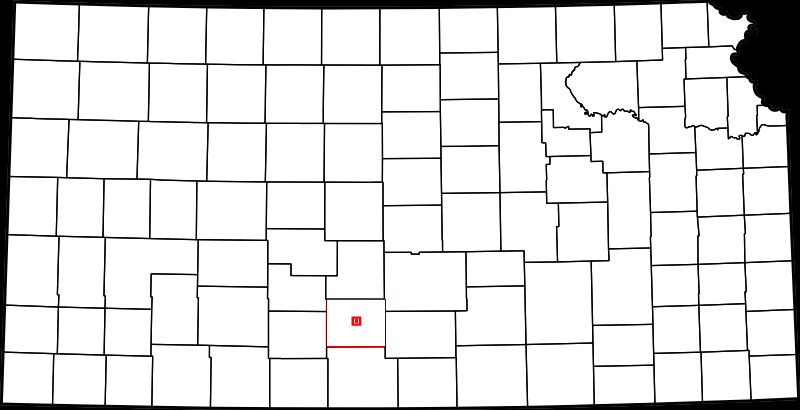- Pratt Army Airfield
Infobox Airport
name = Pratt Kansas Industrial Airport
nativename =
nativename-a =
nativename-r =

image-width =
caption =

image2-width =
caption2 =
IATA =
ICAO =
FAA =
LID =
type =
owner =
operator =
owner-oper =
city-served =
location =
elevation-f =
elevation-m =
coordinates =
website =
metric-elev =
metric-rwy =
r1-number = 17/35
r1-length-f = 6,800
r1-length-m = 2,072
r1-surface = Concrete
r2-number = 13/31
r2-length-f = 6,800
r2-length-m = 2,072
r2-surface = Removed (Non-Operational)
r3-number = 04/22
r3-length-f = 6,800
r3-length-m = 2,072
r3-surface = Removed (Non-Operational)
stat-year =
stat1-header =
stat1-data =
footnotes =Pratt Army Airfield (Prat AAF) was a
World War II United States Army Air Forces facility located about three miles north of the city ofPratt, Kansas . Today, it is known as Pratt Industrial Airport (PTT).The mission of Prat AAF was to process for overseas duty, especially as to equipment, the bombardment wings formed and trained under the
Second Air Force .The function of Pratt Army Air Field, under the administration of the 502d Base Headquarters and Air Base Squadron, was to furnish housekeeping and administrative services to the bombardment groups which made Pratt their temporary station while undergoing combat group training.
History
Construction, begun in 1942, was of the theater of operations type. By the time of the official dedication of the field in May 1943, some 60 barracks had been completed giving accommodations to 2,460 enlisted men. Total authorized construction called for a total of 72 barracks with a capacity of 3,060 enlisted men and eight officers' quarters with a housing capacity of 522.
A few personnel began to arrive well before completion of the field. The first group, a 12-man cadre on detached service, stayed for a time at the Calbeck Hotel in Pratt until facilities at the field had been completed sufficiently for them to move in.
In January 1943 the 502d Base Headquarters and Air Base Squadron was activated to function as the administrative and training squadron for the other organizations which would be assigned to the base. On 10 February 1943 Lt. Col. J.F. Nelson assumed command of the field, and by March the installation began to function as a military post with the barest of essentials in housing, messing, and administrative equipment. Construction and personnel manning had progressed so far by May that on the second of the month the field was officially dedicated.
During 1943 and much of 1944 the newly-formed B-29 bombardment groups conducted their own training at Pratt, with the field and its units serving only in an administrative, housekeeping, and general support capacity. This was true of both the 40th and 497th Bombardment Groups.
As each group went into the latter phases of its training at Pratt, the next group in line to move to Pratt would send its maintenance squadrons ahead in order to acquire experience by assisting in aircraft maintenance for the older group. As a result, when the flight echelon of the new group arrived at Pratt upon departure of the previous group, the maintenance squadrons had acquired sufficient experience to enable them to keep their own group's aircraft in the air.
Early in 1944 a new base unit system was devised throughout the Air Force. At Pratt the 246th Base Unit, OTU (VH), was formed on 1 April 1944. Under the new dispensation the responsibilities of the base were greatly increased, for in addition the base, through the 246th Base Unit, was henceforth to be in charge of the training program of each succeeding B-29 group. For this purpose, a Directorate of Training was authorized. Such a great increase in function could not, of course, be accomplished immediately. Time was needed in which to acquire personnel sufficiently knowledgeable to supervise the instruction. Consequently, the 497th Bombardment Group trained itself just as the 40th Group had done before it. Indeed, it was not until August 1944, with the advent of the 29th Group, that the 246th Base Unit was able to assume the task of group combat training. Under the same system the 29th Group was succeeded at Pratt by the 93d Group in July.
The process of closing down Pratt Army Air Field began in November 1945, while the 93d Group was still in training. The base unit suffered such serious losses of personnel during the month as to render its task of supervising the training of the 93d Group a most difficult one. With the departure of the 93d Group in December, the work of Pratt Army Air Field was done, and there remained only to complete the process of closing down the installation. Col. Reuben Kyle, Jr., as commanding officer, supervised the process.
Pratt Army Air Field was officially inactivated on 31 December 1945, with no subsequent period of activation.
Postwar Use
After World War II ended, the airfield was converted to civil use and is now known as Pratt Industrial Airport. The B-29 All Veterans Memorial at the airport was dedicated on Memorial Day weekend, 2003. The memorial honors ALL veterans, prisoners of war, and the missing in action from ALL conflicts.
B-29 Units Trained At Pratt AAF
*
29th Bombardment Group (Apr - Dec 1944)
* 40th Bombardment Group (Jul 1943 - Mar 1944)
* 93d Bombardment Group (Jul - Dec 1945)
*346th Bombardment Group (Jan - Jun 1945)
* 497th Bombardment Group (Apr - Jul 1944)References
* Kansas Historical Quarterly - Summer/Autumn 1959
* Maurer, Maurer (1983). Air Force Combat Units Of World War II. Maxwell AFB, Alabama: Office of Air Force History. ISBN 0892010924.ee also
*
Kansas World War II Army Airfields External links
* [http://www.prattairport.com Pratt Industrial Airport]
* [http://www.prattarmyairfield.com Pratt Army Air Field History Center]
Wikimedia Foundation. 2010.
